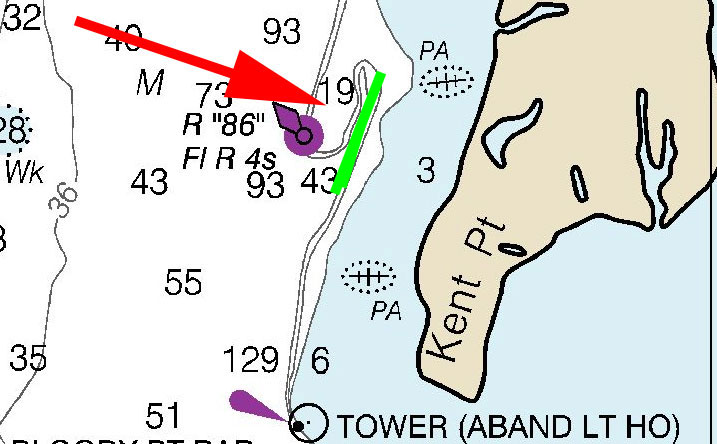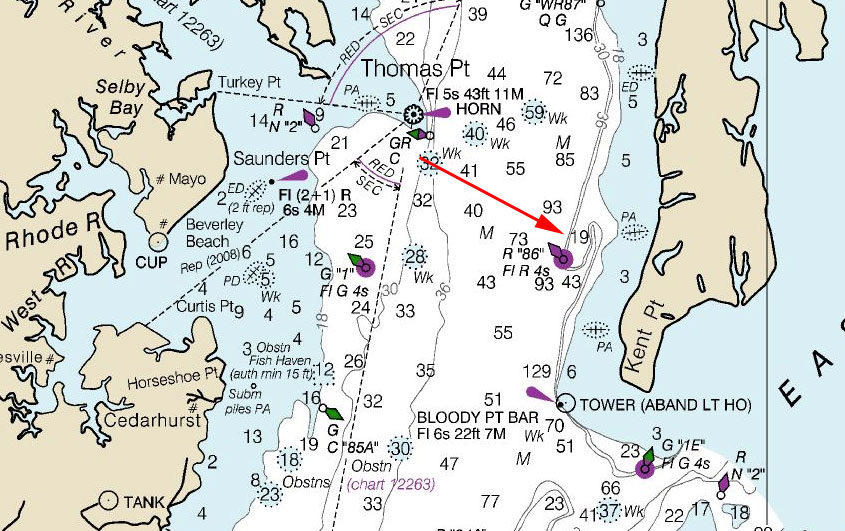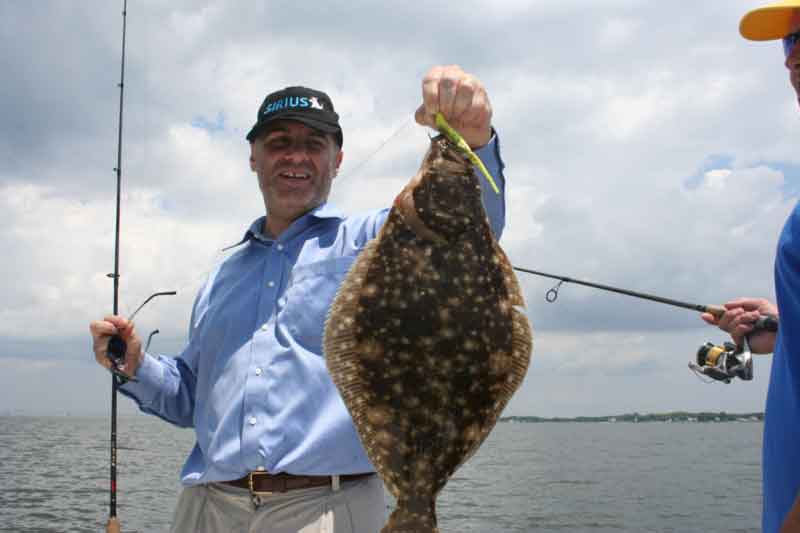If you could envision the perfect Chesapeake Bay fishing hotspot, it might be an underwater hill with a hard-shell bottom that comes up to 20’ yet is surrounded by much deeper water. Say, about 40’ on one side and 80’ on the other. This magical spot would be on the open Bay where it’s subjected to strong currents, yet relatively close to shore where it may be protected from strong winds and big seas when wind direction cooperates. Most of all, this imaginary spot would hold fish. Lots of fish. Striped bass, bluefish, bottom fish, and at times in years past even species like flounder and weakfish. Hold on – the Middle Bay already has a spot like this, made to order: Gum Thickets.

Look on this chart and you’ll see that underwater hill we were dreaming about, surrounded by deep water, with close proximity to Kent Island. And yes, the current washes over this feature, generating the interest of game fish of all varieties. In fact, Gum Thickets is a top-tier hotspot in this area which, for some reason, doesn’t seem to attract as many anglers as other hotspots in this section of the Bay. This may be because it’s a comparatively long run to get here from most common launch points; the Bridge is closer to Sandy Point, Thomas Point is closer to the Severn and the South Rivers, and all of Eastern Bay is closer from Kent Narrows. News Flash: when those spots are packed with boats, you can often come here and catch just as many fish as the folks combat-fishing in those more populated areas.
Trollers will want to make passes along the western and eastern sides of Gum Thickets, while towing standard (fall) spreads of small umbrella rigs with six-inch shad baits in white, chartreuse, and yellow, on a mix of weighted and unweighted lines. Small bucktails dressed with twister tails or Mann’s shad bodies can also be very effective (rig a drop-sinker 20’ up the line and try to bottom-bounce them while going up and down the edges, if you dare). And to pick up bluefish and possibly Spanish Mackerel (in season), be sure to include a couple spoons in the mix.
Jiggers will make drifts across the top of the hump and down the edges with leadheads dressed with plastics, a great way to score stripers and (though rare here in recent years) flounder as well. Four- to six-inch plastics like BKDs in chartreuse and white are a top offering, and if flounder are the target some anglers will prefer four-inch Gulp! Jerk Shad – just as long as bluefish aren’t clipping off those dollar-apiece tails.
Another jigging rig you’ll want to have on hand when visiting this hotspot is a tandem rig, tied with a two- or three-ounce jigging spoon on the bottom and a streamer or bare hook dressed with a three-inch twister tail, up top. Reach for it on those occasions when you spot fish on the meter sitting at or near bottom in the deepest part of the trench, between the underwater hump and the eastern edge. It can be difficult to effectively work a jig here due to the depth, especially on a windy day, but the weight of this type of tandem rig makes finding and holding bottom easy even with a fast drift and a breeze catching your line.
Chummers and live-liners should note that although setting up a chum line or live-lining spot on top of Gum Thickets is productive at times, the better bite is often found on the eastern side of the second patch of deep water where the bottom rises up towards Kent Island (marked in green on the inset chart). This was also a hot area for weakfish, when they were still in the region. If and when they return it should shine once again.

Set up a chum line or send down live spot a foot or two off the bottom here, and you’re probably in for bent rods and a full cooler. Before you choose the exact location to set up, however, make sure you meander along this edge in a north/south pattern, going from 30 feet up to 20 or so, with a close eye on the fishfinder. Cover the entire area and you’ll soon have an idea of where the greatest concentrations of fish are.
All of the above anglers should also keep their eyes peeled, because stripers and blues will often bust water on the bay-side of this feature out over deep water. These fish will often be on the move, and can turn up anywhere along the edge of the old Susquehanna riverbed. Yes, breakers will pop up over Gum itself and inshore of this feature as well, but for whatever reason the fish seem inclined to bust water on the deeper side of the drop on a more regular basis.
No matter where you’re launching from, there are closer spots to try than Gum Thickets. And sure, you’ve probably heard about a hot bite elsewhere. But file this spot away in your brain, and don’t ever forget about Gum Thickets. Because sometimes, a visit here will work some serious magic.

Nearby Fishing Hotspots
Don’t forget that Bloody Point light often holds a few rockfish, too. It’s always worth detouring a bit and taking some casts at the lighthouse on your way past. Savvy anglers will also check the drop-off directly west of the lighthouse. It’s one of the sheerest drops in the Bay, and you’ll find fish holding right up against this edge now and again.
Sign up here to get the weekly FishTalk Chesapeake Bay and Mid-Atlantic fishing reports in your email inbox, every Friday by noon.